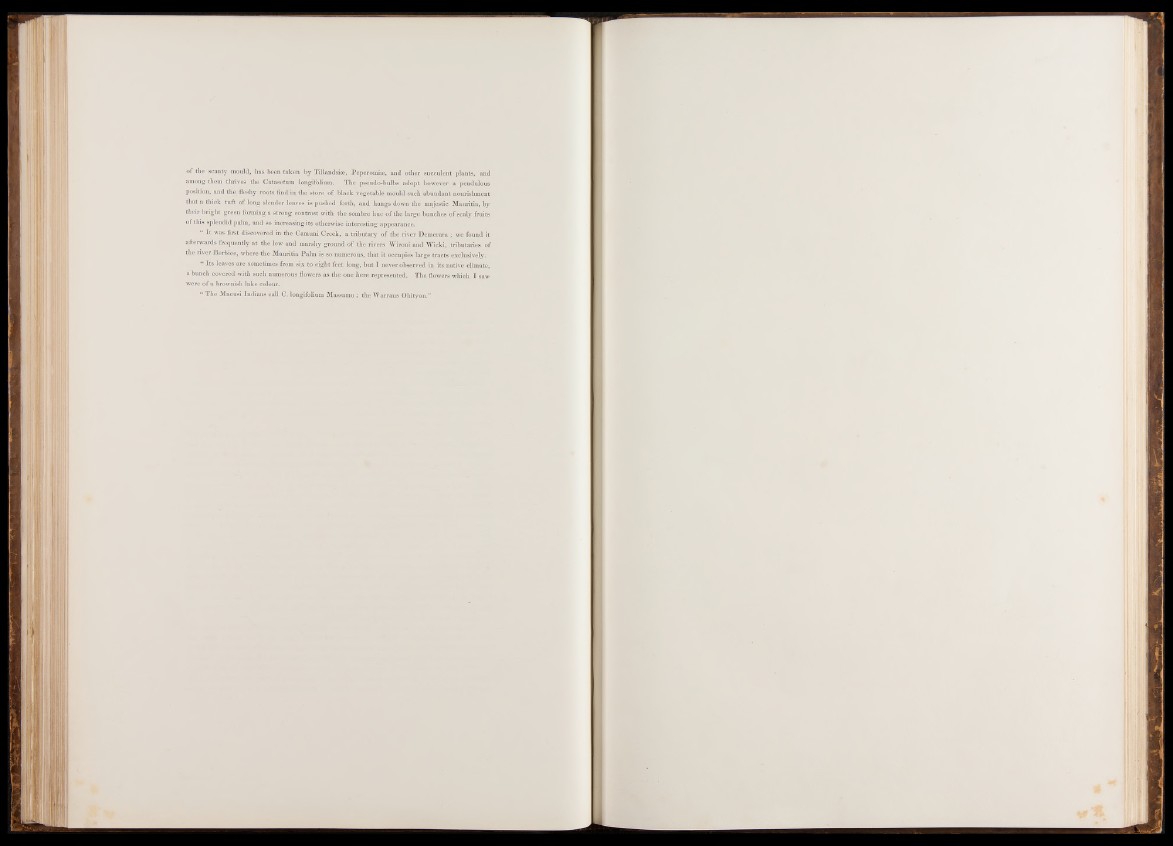
of the scanty mould, has been taken by Tillandsiae, Peperomiae, and other succulent plants, and
among them thrives the Catasetum longifolium. The pseudo-bulbs adopt however a pendulous
position, and the fleshy roots, find in the store of black vegetable mould such abundant nourishment
that a thick tuft of long slender leaves is pushed forth, and hangs down the majestic Mauritia, by
their bright green forming a strong contrast with the sombre hue of the large bunches of scaly fruits
of this splendid palm, and so increasing its otherwise interesting appearance.
“ It was first discovered in the Camuni Creek, a tributary of the river Demerara ; we found it
afterwards frequently at the low and marshy ground of the rivers Wironi and Wicki, .tributaries of
the river Berbice, where the Mauritia Palm is so numerous, that it occupies large tracts exclusively.
“ Its leaves are sometimes from six to eight feet, long, but I never observed in its native climate,
a bunch covered with such numerous flowers as the one here represented. The flowers which I saw
were of a brownish lake colour.
“ The Macusi Indians call C. longifolium Massamu; the Warraus Ohityon.”